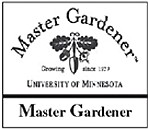January 8, 2004 at 12:24 p.m.
Jeff Hahn, Assistant Extension Entomologist, recently wrote on the similarity between fruit flies and phorid flies. When people see small flies in their home, their first thought is that they must have fruit flies. However it could be one of several kinds of small flies including phorid flies. They are also called humpback fly, coffin fly and scuttle fly.
These flies are about 1/8 inch long, tannish to dark brown and have a hump-shaped thorax. Under magnification, you can see the pattern of veins in their wings. They have two strong veins at the top of their wings and three or four parallel veins radiating out from there.
The easiest way to tell them from fruit flies is by their eyes. Fruit flies usually have red eyes, while phorid flies have dark eyes. Phorid flies move in a rapid, jerky motion and prefer to walk or run on walls and counters. Fruit flies tend to fly more often like most other flies.
While fruit flies prefer over-ripe fruit for their diet, phorid flies like most types of decaying organic material. They can be found in drains, especially in bathroom sinks and showers, on food residue in trash containers, rotting food, seldom used garbage disposals, dirty mops and old dish rags, potting soil, organic material on the bottom of pet cages, etc. These flies can occur in large numbers and become a real nuisance. They can potentially be a vector for disease organisms because they visit rotting food and unclean areas. However, they are generally not considered to be a medical problem.
The most effective control of phorid flies is to locate and remove the moist organic material that the larvae develop in. Finding the food source may be easier said than done. Remember, they can be found in a variety of unexpected places. The key is to look for moist organic material.
Despite the work it takes to find the source, it is worth the extra effort and will result in a long-term solution to the problem. It may be tempting to spray the adult flies with an insecticide to control the problem, but as long as there is a food source, they will continue to occur.
+++++
Extension update: We have completed our move to new offices located at the Green Acres Care Facility in North Branch. It is a much smaller office space, so it is taking some time to find creative ways to fit our necessary items. Please be patient as we work through the transition. Office hours for Starr Carpenter, Horticultural Program Assistant, have been reduced to 10 hours per week. For this reason it may take longer for you to get a response to your questions, but be assured we will respond. The new number for your gardening questions is 651-237-3080. The new email address is: [email protected]
Look for information toward the end of January about Bonanza 2004 “Garden Fever” which will be held at Maranatha Church, in Forest Lake, March 6. Call or email if you would like to be added to the mailing list or are interested in being a vendor.






Comments:
Commenting has been disabled for this item.